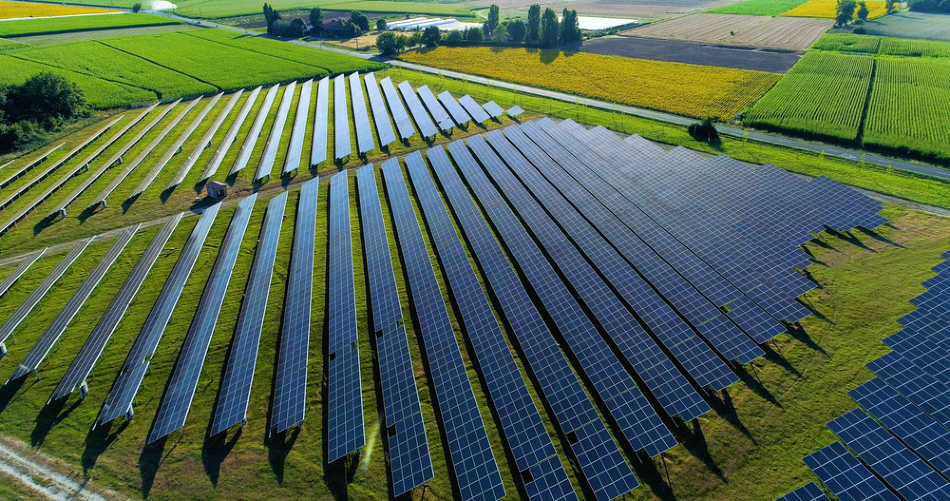
Image Credit: Fly_and_Dive/Shutterstock.com
Solar cell technologies continue to advance and are becoming more efficient. Inorganic solar cells have the highest efficiencies to date, and out of all the different inorganic solar cells, perovskite materials have the most potential to be used as the semiconducting junction. However, their development is currently hindered by the electrodes available. Now, new ways are being devised to combat this.
What is Perovskite?
Perovskite materials are inorganic materials with a basic chemical structure of A2+B4+X32-, where the A and B represent two different cations - A has an ionic charge of 2+ and B has an ionic charge of 4+. Both cations in perovskites are linked by an anion that bonds to both cations.
Perovskite solar cells have reached very high efficiencies of up to 25.2%. However, their development has struggled commercially due to the instability of (leading to device instabilities and short usable lifetimes), or stable electrodes (such as gold) being too expensive for the device to be commercially feasible.
There are several cheaper metals (which are not noble metals) that have been trialed and do work to some extent. However, many of the cheaper electrodes can leak ions and form metal halide complexes. This not only degrades the electrodes and the efficiency of the solar cell, in some cases, it can also form toxic compounds (one typical example being lead iodide), meaning that the solar cell can become a pollutant.
Given that perovskite solar cells have a lot of potential, and have already showcased high operational efficiencies, there is a lot of work going in to make perovskite solar cells commercially feasible from both an economic and scientific standpoint.
Researchers have been looking at many options, including transforming 3D perovskites into quasi 2D-materials. However, this involves creating completely new devices.
Another option, which is suitable for existing devices that use 3D perovskite architectures, is to find novel electrodes that could help boost the performance and long-term stability of the solar cells.
Using a Graphene Armor
One of the most interesting pieces of research this year is to use a graphene armor to improve the long-term stability of solar cells.
In this unique piece of research, a graphene-based protection layer was inserted between the electrode and perovskite junction. Using solar cells with cheap metal electrodes, it was found that the protective layer can help to prevent metal-induced degradation as well as suppress the diffusion of metal and halide ions within the solar cell.
The electrode used is a hybrid electrode base around the copper. The electrode features a copper grid-embedded polyimide film, while the graphene layer on top acts as the protective layer. The graphene has high electrical conductivity, chemical stability, and mechanical durability, which makes the system stable and conductive.
Using graphene as the protective layer meant that the electrons could pass through, but any ions were too large to pass. This created an impenetrable barrier between the junction and the electrodes, which prevented ions diffusing and stopped toxic and degrading compounds from forming.
Moreover, because graphene is so thin and has high optical transparency, its inclusion had a minimal impact on efficiency as there was not much effect on the optical transmittance. Overall, 1.1% efficiency was lost compared to those without the ‘graphene armor’ but the high stability showcased by a 97.5% retention of the initial efficiency after 1000 hours made up for the small efficiency loss.
Click here to find out more about the coating testing equipment available on the market.
Using Carbon Counter Electrodes
Another method has undergone extensive research by different groups using slightly different approaches: the use of carbon counter electrodes to stabilize the cell when cheaper materials are used to fabricate the solar cell electrodes.
A counter electrode, otherwise known as an auxiliary electrode, is a third electrode that is added into an electrochemical system, but is not usually used in the electrochemical reaction itself. Instead, it is often used to pass a current and apply a voltage to the cell. However, these third electrodes are located in the electrolyte between the anode and the cathode, so they can be used in a dual capacity manner by acting as hole transport materials instead of some of the more traditional conductive materials.
This has become an effective option for perovskite solar cells (as well as other solar cells) as it enables cheaper electrode materials to be used, and the counter electrodes themselves are typically made out of inexpensive materials, such as graphite, as well as carbon-based nanomaterials.
The third electrode acts as an electronic control for the cell, controlling the current and helping to prevent electrical breakdown within the cell.
The dual use of these electrodes means that they are a potential low-cost solution, as the ability for the electrode to act as a hole transport material helps to better facilitate hole-electron recombination interaction. This leads to higher efficiencies and stabilities in various environments, including moisture-rich environments that often degrade the electrode.
References and Further Reading
Yuan M. et al., Reduced-dimensional perovskite photovoltaics with homogeneous energy landscape, Nature Communications, 11, (2020), 1672. https://doi.org/10.1038/s41467-020-15451-1
Wu M. et al., Carbon Counter Electrodes in Dye‐Sensitized and Perovskite Solar Cells, Advanced Functional Materials, 10(3), (2020), 499. https://doi.org/10.1002/adfm.201906451
Pitchaiya, S. et al., Perovskite Solar Cells: A Porous Graphitic Carbon based Hole Transporter/Counter Electrode Material Extracted from an Invasive Plant Species Eichhornia Crassipes, Scientific Reports, 10, (2020), 6835. https://doi.org/10.1038/s41598-020-62900-4
Perovskite-Info (2019) What are perovskite? [Online] Available at: https://www.perovskite-info.com/perovskite-solar (Accessed on 14 July 2020).
Irving, M. (2020) "Graphene armor" protects perovskite solar cells from damage. [Online] New Atlas. Available at:https://newatlas.com/electronics/graphene-armor-peovskite-solar-cell/ (Accessed on 14 July 2020).
Heo, J. (2020) Enhancing the Performance of PSCs with ‘Graphene Armor’. [Online] Available at: https://news.unist.ac.kr/enhancing-the-performance-of-pscs-with-graphene-armor/ (Accessed on 14 July 2020).
Disclaimer: The views expressed here are those of the author expressed in their private capacity and do not necessarily represent the views of AZoM.com Limited T/A AZoNetwork the owner and operator of this website. This disclaimer forms part of the Terms and conditions of use of this website.